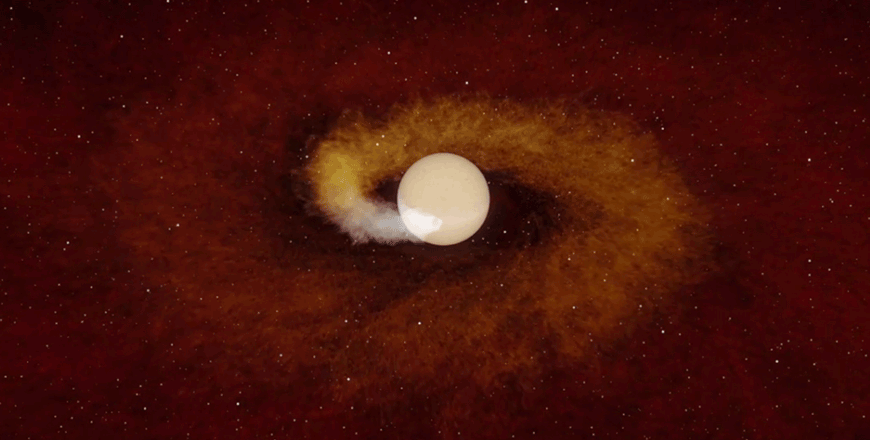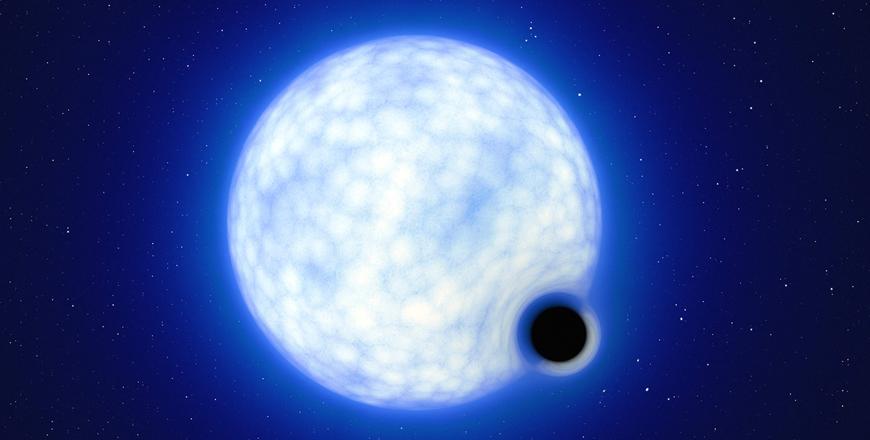You are here
White dwarf star exploding into a nova caught
By Los Angeles Times (TNS) - Aug 20,2016 - Last updated at Aug 20,2016
It’s not every day you get to see a star go nova. Scientists at the Warsaw University Observatory in Poland have managed to catch a binary star system both before and after its explosive flash.
The findings, described in the journal Nature, confirm a long-held theory about novae known as the hibernation hypothesis — and could potentially help scientists better understand when such stellar outbursts occur.
Novae are typically caused by a gravitationally locked pair of stars, called a binary system, consisting of one white dwarf and a companion star. A white dwarf is an ageing star that has already shed much of its mass, leaving behind a small but massive core. Like a gravitational vampire, the white dwarf siphons off material from its stellar companion into its own accretion disk — and every so often, the system becomes so unstable that the white dwarf erupts, producing a cataclysmic explosion that causes it to flare brightly in the night sky.
“The most spectacular eruptions, with a ten-thousandfold increase in brightness, occur in classical novae and are caused by a thermonuclear runaway on the surface of the white dwarf,” the study authors wrote. “Such eruptions are thought to recur on time scales of ten thousand to a million years.”
Such explosions might actually have seeded the universe with some elements and radioactive isotopes, such as lithium (which is used in battery manufacturing), said lead author Przemek Mroz, an astronomer at the observatory.
Around 50 novae go off every year in the Milky Way, but only five to ten are actually observed because most of them are shrouded by interstellar gas and dust, Mroz said in an e-mail. The closest and brightest, however, can potentially be picked out with the naked eye.
But while novae can be seen once they go off, scientists don’t often get the chance to study them in depth before they explode.
Researchers have long had a theory about the cycle that causes these novae: When the mass transfer is low (less than a billionth of the sun’s mass per year), the accretion grows unstable; every so often, stuff gets dumped onto the white dwarf in what the authors called “dwarf nova outbursts”.
But those are just the lead-up to the classical nova, that enormous flare-up in the sky. When the classical nova explosion finally occurs, it actually boosts the mass-transfer rate for centuries, keeping the system more stable until it dwindles and begins to approach the “hibernation” period, thus repeating the process.
But scientists couldn’t say what was really happening until the nova V1213 Cen flashed in 2009 and was caught by the university’s Optical Gravitational Lensing Experiment (OGLE).
“This discovery would be impossible without long-term observations by the OGLE survey,” Mroz wrote in an e-mail.
“The survey started almost 25 years ago and for 20 years we have had a dedicated 1.3-metre telescope at Las Campanas Observatory in Chile. This is another case when OGLE data are crucial for studying unique, extremely rare phenomena.”
The scientists had been observing V1213 Cen since 2003, giving them six years’ worth of data to analyse in the run-up to the big flash, and they continued to study it for years afterward.
“Thanks to long-term pre- and post-eruption observations, we can trace the nova evolution very precisely and [compare] it with theoretical models,” Mroz said. “Our observations are consistent with the hibernation hypothesis predictions (but of course are NOT a definitive proof of this scenario).”
Ultimately, these findings may better help researchers to understand the evolution of binary stars (and, because they produce at least some of the elements that populate the universe, into the makeup of the universe).
For now, scientists continue to monitor the binary star. Mroz said he wants to make spectral observations of V1213 Cen in order to better understand the system’s properties as well as conditions in the accretion disk around the white dwarf.
“V1213 Cen is now slowly fading,” the study authors wrote. “What will be its fate? We can expect that the system will remain bright for a few decades and then it will again transform into a dwarf nova, following the hibernation theory predictions.”
Related Articles
PARIS — An international team of scientists said Monday they had discovered a trio of Earth-like planets that are the best bet so far for fi
But when the Sun finally does engulf Earth, it will cause only a “tiny perturbation” compared to this cosmic explosion, the US astronomers said.
PARIS — A team of astrophysicists known for debunking previous supposed black holes announced a discovery of their own on Monday: the first



















